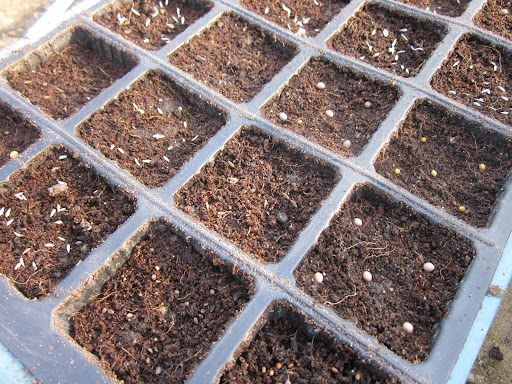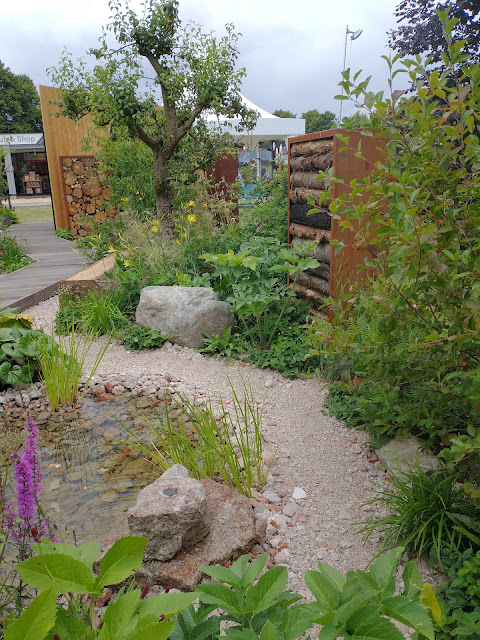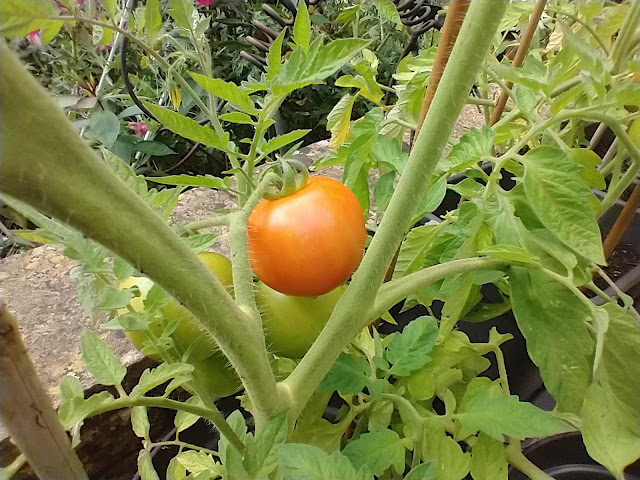Plant Profiles: Snowdrops
 |
| Massed snowdrops at Colesbourne Park on Sunday |
I've had a wonderful time visiting a number of gardens noted for their snowdrops, but now is the time to hunker down and admire those in my own garden. It's time for the annual snowdrop count, where I reassure myself that my clumps of good old Galanthus nivalis and doubles (Galanthus nivalis f. pleniflora 'Flore Pleno') are not only thriving, they're multiplying.
My blogging pals ask how I achieve my count. I'm sure their mind's eye pictures my blooms in the same profusion as those I saw at Colesbourne Park with Victoria on Sunday. The current reality at VP Gardens is not so profuse*, so it's easy to work through each clump, gently putting the counted snowdrops to one side until each little patch is recorded. My snowdrops aren't at their peak yet and I reckon it's a week or so until I know whether last year's count of 3,127 is exceeded.
 |
| One of the smaller clumps of Galanthus nivalis in my garden. How many do you see? |
My count started the year after NAH gave me 1,000 in the green snowdrops for my birthday. It took me quite a while to plant them, so I was worried they wouldn't come back the next year. That first census showed I'd lost around 25%** of those I'd planted, which was a much better result than my previous non-success with bulbs.
Since then I've seen quite a debate about the best way to plant them. John Grimshaw, one of THE snowdrop experts and latterly of Colesbourne Park, advises planting plump well-formed bulbs in early summer (when lifting and dividing your own bulbs***), as their stores will be fully formed ready to flower the next spring.
Bulbs had a bad press previously because they were often supplied as dried out, shrivelled specimens and thus in the green became the more reliable supply of choice. These need to be bought or lifted and planted as fresh as possible for success. Note also that any root disturbance during the digging up process means surviving plants often spend their first year or so settling into their new home rather than getting ready to flower.
They also need to be kept well-watered during this time as there is often a dry period in spring after they're planted. Bulb supplies are much improved now, so I think it's a matter of choosing the method which suits your gardening timetable and conditions best, finding a good supplier of bulb or plant, then giving them the conditions they need to thrive.
 |
| Snowdrops on display close to the house at Colesbourne Park |
There's also the pot-grown supply option, which is a sort of half-way house between the two. Having vowed never to start down the slippery slope of having a snowdrop collection, I now find myself with a small but perfectly formed set of 6 special pots ready for a new home in the garden.
After hearing Naomi's talk I know keeping my bulbs in pots is only a temporary solution. I'm worried about hybridisation if I plant them out in my garden as I don't have the space to grow them in discretely separate places close to the house. I liked the way Colesbourne Park displayed theirs, so I'm thinking about asking for a deep stone trough for my birthday to re-home my new-found treasures.
* = though I'm working on achieving a wonderful mass of snowdrops on the bank at the side of our house, just like those in the picture
** = or had I? Perhaps they were just settling into their new home rather than flowering
*** = purchased bulbs should be planted out as soon as possible
---------------------------------------------------------------------------------------------------------------
Cultivation notes
 |
| My side garden bank of snowdrops |
Clumps of snowdrops propagate themselves easily - lift a clump that's getting congested and you should find plenty of mature and mini-bulbs ready for dividing up and planting out elsewhere. I've also tried bending the seedheads over after flowering and burying them in fresh soil to establish new clumps. I'm not sure how effective this is as it'll be several years before any flowers are seen.
 |
| G. 'Flore Pleno' |
Snowdrops are noted for their honeyed scent and provide a good source of nectar for bees on the warmer winter days. One of the snowdrops most noted for its scent is Galanthus 'S. Arnott' - Colesbourne Park has a bank of these near the steps leading up from the lake. I can confirm how noticeable their scent was last Sunday!
 |
| Snowdrops and cyclamen |
There has been much debate on whether snowdrops are native to the UK. The current thinking is they're naturalised escapees from gardens. They aren't edible, but substances extracted from them such as galantamine are proving useful in the treatment of Alzheimer's disease and dementia.
 |
| Snowdrops at Lacock Abbey |
Further reading
- RHS general guidance on snowdrop cultivation and propagation
- RHS guidance on the common snowdrop Galanthus nivalis and its double form G. 'Flore Pleno'
- My review of Naomi's Plant Lover's Guide to Snowdrops - a very accessible read and a guide to around 70 of the best snowdrops for your garden
- Snowdrop lovers who want a more detailed guide to around 500 snowdrops should read Snowdrops: A monograph of cultivated Galanthus
Latin without tears
There are 20 snowdrop species listed officially (as at 2015). Here's a guide to the more common ones available and their meanings:
- Galanthus - readers of my first fun latin quiz already know the genus name is formed from the Greek words for milk (gala) and flower (anthos)
- elwesii - named after Henry John Elwes (1846 - 1922), plant collector and owner of Colesbourne Park, where this species is seen in profusion and has given to rise to hybrids such as 'Colossus'
- flore-pleno - with double flowers (NB this describes the double form of Galanthus nivalis, rather than being a species in its own right)
- nivalis - as white as snow, or growing near snow
- plicatus - pleated
- reginae-olgae - named after Queen (the reginae bit) Olga of Greece (1851-1926)
- woronowii - named after Georg Woronow, a Russian plant collector (1874-1931)
------------------------------------------------------------------------------------------------------------
Plant Profiles is sponsored by Whitehall Garden Centre.
Note to readers:
Sponsorship goes towards my blogging costs; the words are my own There are no cookies or affiliate links associated with this post.
Plant Profiles is sponsored by Whitehall Garden Centre.
Note to readers:
Sponsorship goes towards my blogging costs; the words are my own There are no cookies or affiliate links associated with this post.











Useful post Michelle, thanks. And weirdly, I was at Colesbourne on Sunday too! In case it's of interest to your readers, my blogpost has a few close-ups of some of those I saw there: http://www.gwenfarsgarden.info/2015/02/garden-visit-colesbourne-park-snowdrops.html
ReplyDeleteGreat post Gwenfar - it's a shame we didn't bump into each other on Sunday!
DeleteOur snowdrips are at about the same stage. Must admit to having mixed feelings about double snowdrops.
ReplyDeleteMe too - but I have a sneaking liking for the double 'Lady Beatrix Stanley' as she is so dainty.
DeleteI am sure I was told or read the majority of snowdrops except for the species dont seed so hydribisation wouldnt be a problem. But then I found myself wondering if this is the case how do we get such variety and I am now most confused!
ReplyDeleteI need to do a bit more delving on that then Helen. It would be good to know that most of my 'specials' are safe. However, I also have some pots of G. elwesii and they're extremely variable in both size and markings!
DeleteHow on earth do you have the patience to count 3,000 snowdrops? I'd get up to 2,041, lose my place and have to start again.
ReplyDeleteI divide the garden into sections and tackle them one at a time, Victoria. There's a lot of fingers involved too as I work through the 100s!
DeleteI tried to comment a couple of days ago but away from home and my iPad seems unable to cope with commenting on Blogger posts :( A most informative and well written post Michelle. I would caution against buying snowdrop bulbs in the autumn from garden centres. Latest plantings of such around my dad's grave resulted in not a solitary snowdrop which I was sad to see last week. I do buy both dormant bulbs and in the green bulbs from specialist nurseries and growers and have had success with both methods. Like you said I think it's a matter of finding what fits in with you best. It sounds as if you will soon fill up that trough.
ReplyDeleteThanks for your persistence Anna and I wonder if your iPad woes are the root cause of other comments I've had about leaving comments on Blogger. That's really sad about your dad's grave and I hope you'll add more bulbs in the future. The autumn bulbs have a better reputation than they did - many bulbs used to be dried out in Turkey after harvesting, though that practice is now seen as being detrimental to the bulb. However, as you say purchasing from a specialist nursery or grower is the better option.
Delete